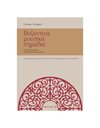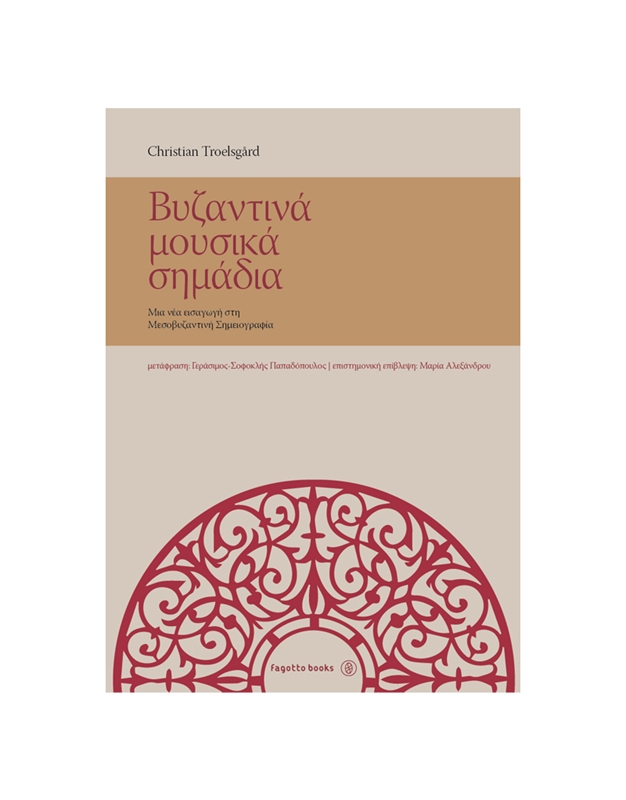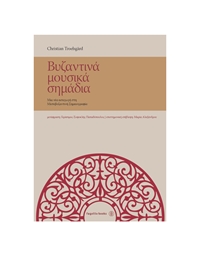{"__type":"Lighthouse.Lh3.FrontEnd.Root.Model.AdapterParameters, Vendd.Website.Backend, Version=2022.3.97.1, Culture=neutral, PublicKeyToken=null","LoaderOptions":{"__type":"Lighthouse.Lh3.FrontEnd.Controls.Builtin.ProductDetailsLoaderOptions, Vendd.Website.Backend, Version=2022.3.97.1, Culture=neutral, PublicKeyToken=null","ParentProductId":573115,"PathChecksum":-1869899727,"LanguageId":2,"SkuId":null,"SplitDimensions":null,"BundleItems":[],"ItemAttributes":[],"LanguageCode":"en","CurrencyCode":"EUR","SiteCode":"nakas-gr","Cacher":null,"AdditionalOptions":{},"Widget":null,"SqlStatement":null},"AdapterOptions":{"__type":"Lighthouse.Lh3.FrontEnd.Root.Model.ProductDetailsBaseAdapter+ProductDetailsAdapterParams, Vendd.Website.Backend, Version=2022.3.97.1, Culture=neutral, PublicKeyToken=null","IsDynamic":false,"EnableNoImage":true,"DimensionImageTypes":[],"SelectDefaultSku":false,"Actions":2147483647,"LazyLoadPrices":false,"AttributesStartIndex":null,"Articles":{},"Literals":{"allProductsText":"All Products","allProductsLink":"/en/products/","Second_Tab_Label":"SIZE GUIDE","Third_Tab_Label":"SHIPPING","Fourth_Tab_Label":"RETURNS","Share_Label":"Share it:","Add_To_Wishlist_Mobile_Button":"Add to favorites","Code_Label":"CODE","Brand_Label":"BRAND:","Notify_Me_Button":"I\u0027M INTERESTED","Fifth_Tab_Label":"REVIEWS","Click_On_Photo":"Click on photo for zoom","Select_SizeColor":"SELECT COLOR/SIZE","Select_Size":"Select Size","Select_Color":"Select Color","InfoText":"Free Shipping for orders above 19€ ( inside Greece )","AdditionalFilesTabText":"Downloads","ViewPdfText":"See the PDF","DownloadPdfText":"Download the PDF","AddOnsText":"Select floor transfer","InstallmentsText":"interest free installments","InstallmentsText2":"Installment Calculation","InstallmentsPreselectedValue":"Get it with installments!","ISBN_code":"","AskPriceBtnText":"REQUEST INFO","InShopsOnlyText":"In shops only","Table_Price":"Unit Price","Table_Discount":"Discount","Table_Pieces":"Quantity","Loyalty_Text":"SEE HOW","Loyalty_Url":"en/chrisimes-plirofories/programma-loyalty","MarketPriceText":"Suggested Catalog Price","Tag1EduName":"Find Related Accessories Here","Tag1EduUrl":"https://www.nakas.gr/en/proionta/mousika-organa/kithares/axesouar-kitharas/","Tag2EduName":"Find Related Accessories Here","Tag2EduUrl":"https://www.nakas.gr/el/proionta/mousika-organa/paradosiaka/axesouar-paradosiakon/","Tag3EduName":"Find Related Accessories Here","Tag3EduUrl":"https://www.nakas.gr/el/proionta/mousika-organa/pliktra-synths/axesouar-pliktron/","Tag4EduName":"Find Related Accessories Here","Tag4EduUrl":"https://www.nakas.gr/el/proionta/mousika-organa/enchorda/axesouar-enchordon/","Tag5EduName":"Find Related Accessories Here","Tag5EduUrl":"https://www.nakas.gr/el/proionta/mousika-organa/pnefsta/axesouar-pnefston/","Tag6EduName":"Find Related Accessories Here","Ta61EduUrl":"https://www.nakas.gr/en/proionta/dj/axesouar-parelkomena/","Tag7EduName":"Find Related Accessories Here","Tag7EduUrl":"https://www.nakas.gr/en/proionta/epang-kos-ichos-eikona/mikrofona/parelkomena-mikrofonon/","Tag8EduName":"Find Related Accessories Here","Tag8EduUrl":"https://www.nakas.gr/el/proionta/epang-kos-ichos-eikona/akoustika/antallaktika-kai-parelkomena-akoustikon/","Tag9EduName":"Find Related Accessories Here","Tag9EduUrl":"https://www.nakas.gr/el/proionta/oikiakos-ichos-eikona/icheia/","Tag10EduName":"Find Related Accessories Here","Tag10EduUrl":"#","Tag11EduName":"Learn piano here 10","Tag11EduUrl":"#","Tag12EduName":"Learn piano here 11","Tag12EduUrl":"#"},"SocialShares":{"__type":"Lighthouse.Lh3.FrontEnd.Root.Model.SocialShareViewModel, Vendd.Website.Backend, Version=2022.3.97.1, Culture=neutral, PublicKeyToken=null","FacebookLinkEnabled":true,"TwitterLinkEnabled":true,"GooglePlusLinkEnabled":false,"LinkedInLinkEnabled":false,"PinterestLinkEnabled":false,"EmailLinkEnabled":true,"PrintLinkEnabled":false,"ProfileId":"","IsEnabled":true,"Configuration":null,"DebugInformation":null},"WarehouseAvailabilities":{"__type":"Lighthouse.Lh3.FrontEnd.Root.Model.ProductWarehouseAvailabilityDataViewModel, Vendd.Website.Backend, Version=2022.3.97.1, Culture=neutral, PublicKeyToken=null","GeoLocationWithZipCode":true,"IgnoreAvailability":false,"WarehouseResultsCount":100000,"PartnerGroupBy":"","SelectStores":false,"EnableTrackingLocation":false,"WarehouseDistances":[],"CheckAvailabilityText":"Search Warehouses","CheckAvailabilityWithTrackingLocationText":"Search Warehouses Near My Location","ShowWarehouseSearchText":"Check Availability In Our Stores","WarehouseHelpText":"Insert your zipcode to see product availability in a Philippos Nakas store near you. The products only available at our stores (and not at Paiania which is our central warehouse) can be picked up only at the respective store, after you communicate with the store. ","WarehouseHelpTextTwo":"Check the availability of the product in the store of your choice","WarehouseTitle":"Check Availability In Our Stores","WarehouseSearchText":"Insert Postal Code","WarehouseDistancesText":"Max distance.","WarehouseContinueShopping":"SELECT STORE \u0026 CONTINUE SHOPPING","WarehouseProceedToCheckout":"SELECT STORE \u0026 PROCEED TO CHECKOUT","LocationText":"Insert your City or Postal Code","ErrorCalculatingDistancesText":"No calculation returned","PostalCodeInvalidText":"Not valid Postal Code","Configuration":null,"DebugInformation":null},"Widget":null},"LoaderAssemblyName":"Vendd.Website.Backend, Version=2022.3.97.1, Culture=neutral, PublicKeyToken=null","LoaderClassName":"Lighthouse.Lh3.FrontEnd.Controls.Builtin.ProductDetailsLoader","AdapterAssemblyName":"Vendd.Website.Backend, Version=2022.3.97.1, Culture=neutral, PublicKeyToken=null","AdapterClassName":"Lighthouse.Lh3.FrontEnd.Root.Model.ProductDetailsAdapter"}
- Find Related Accessories Here Find Related Accessories Here Find Related Accessories Here Find Related Accessories Here Find Related Accessories Here Find Related Accessories Here Find Related Accessories Here Find Related Accessories Here Find Related Accessories Here Find Related Accessories Here Learn piano here 10 Learn piano here 11 includeProductsFromFeed
- Find Related Accessories Here Find Related Accessories Here Find Related Accessories Here Find Related Accessories Here Find Related Accessories Here Find Related Accessories Here Find Related Accessories Here Find Related Accessories Here Find Related Accessories Here Find Related Accessories Here Learn piano here 10 Learn piano here 11 UserXmlFull
- Find Related Accessories Here Find Related Accessories Here Find Related Accessories Here Find Related Accessories Here Find Related Accessories Here Find Related Accessories Here Find Related Accessories Here Find Related Accessories Here Find Related Accessories Here Find Related Accessories Here Learn piano here 10 Learn piano here 11 UserXmlWV
- Find Related Accessories Here Find Related Accessories Here Find Related Accessories Here Find Related Accessories Here Find Related Accessories Here Find Related Accessories Here Find Related Accessories Here Find Related Accessories Here Find Related Accessories Here Find Related Accessories Here Learn piano here 10 Learn piano here 11 BoxNow

CODE:
ΠB-629
22.50 €
ΠΙΣΩ ΣΤΗΝ ΛΙΣΤΑByzantine Music
Troelsgard Christian - Byzantine Musical Signs
CODE:
W399941075
9789606685866
- Find Related Accessories Here Find Related Accessories Here Find Related Accessories Here Find Related Accessories Here Find Related Accessories Here Find Related Accessories Here Find Related Accessories Here Find Related Accessories Here Find Related Accessories Here Find Related Accessories Here Learn piano here 10 Learn piano here 11 includeProductsFromFeed
- Find Related Accessories Here Find Related Accessories Here Find Related Accessories Here Find Related Accessories Here Find Related Accessories Here Find Related Accessories Here Find Related Accessories Here Find Related Accessories Here Find Related Accessories Here Find Related Accessories Here Learn piano here 10 Learn piano here 11 UserXmlFull
- Find Related Accessories Here Find Related Accessories Here Find Related Accessories Here Find Related Accessories Here Find Related Accessories Here Find Related Accessories Here Find Related Accessories Here Find Related Accessories Here Find Related Accessories Here Find Related Accessories Here Learn piano here 10 Learn piano here 11 UserXmlWV
- Find Related Accessories Here Find Related Accessories Here Find Related Accessories Here Find Related Accessories Here Find Related Accessories Here Find Related Accessories Here Find Related Accessories Here Find Related Accessories Here Find Related Accessories Here Find Related Accessories Here Learn piano here 10 Learn piano here 11 BoxNow
PDF EXPORT
Troelsgard Christian - Byzantine Musical Signs-VenddEshop
VenddEshop
Troelsgard Christian - Byzantine Musical Signs - ATTRIBUTES | VenddEshop
Troelsgard Christian - Byzantine Musical Signs - ATTRIBUTES | VenddEshop
VenddEshop
Troelsgard Christian - Byzantine Musical Signs | Byzantine Music
CODE: ΠB-629
Price 22.50 €
DESCRIPTION
The branch of Musicology that studies the evolution of musical instruments over the centuries is divided into many sub-fields, which usually correspond to the various European or extra-European cultural traditions, but also explore the correlations or interactions that develop between them. However, the study of the musical instruments of Byzantine Civilization has so far been left out of this research process. Thus, the influence that Byzantium exerted on the course of the evolution of the musical instruments used in Europe, but also on the Mediterranean Cultures, has not been understood so far, nor has its extent and importance been appreciated.As early as the 8th century, the first attempts at music recording appeared in Byzantium, which evolved and led to the development of a complete system, the so-called "Middle Byzantine notation", in the middle of the 12th century.
These musical signs assisted the practice of chanting and teaching until the beginning of the 19th century, when the reform of the "New Method" took place centered in Constantinople.
Professor Christian Troelsgard, a leading contemporary exponent of the famous "Copenhagen School", gathers in this book the knowledge and experiences of himself, but also of the representatives of the Monumenta Musicae Byzantinae in general, on both the decoding of Meso-Byzantine and Mesopotamian notation. various aspects of Byzantine Song (octave, genre of music, repertoire, etc.).
The textbook begins with four introductory chapters, which introduce the reader step by step to issues related to the language of Byzantine hymns and troparions, the types of Byzantine music writing as well as various ways of translating the old parasignificant into the stave or alphabetically, with emphasis on the transcription system used in this book.
The following is the main part of the manual, which contains a systematic teaching of Middle Byzantine writing. The reader can learn and deepen his knowledge on aspects such as:
• a geography of dissemination of mid-Byzantine writing, based on representative musical manuscripts,
• the beacons of the Middle Byzantine notation: according to, regardless of their characteristic positions, damage,
• the old octave: theoretical bases, echoes, suffixes, the phenomenon of chromaticity, changes,
• genres and types of composition, with emphasis on the repertoire of the old Byzantine era (simple psalmody, auto-mela-simoi, eirmoi, stichira, samples of members of the Psalter and Asmatiko) and an opening to the calophonic repertoire.
By quoting a large number of musical examples transcribed on the stave and using accessible and understandable language, the author manages to masterfully combine the immediacy required by a textbook with the penetration of a scholarly text that delves into the problematic aspects of the study. time.
Contents:
Foreword
Preface of the Greek edition
Preamble
Introduction
I. The texts of the songs
Words and music
The language of chanting texts
Tones and music
Writing and music
Self-contained - Simulated
Chanting based on syllables
II. Preliminary remarks on Byzantine notation
Chanting tradition before the nods
Byzantine and Western pneumatic notations
The unknown origins of Byzantine notation
From "space" to "space"
The problem of "scales" and "stringing"
III. The varieties of Byzantine musical notations
Reading Notation or "Speech"
Theta notation
Coislin and Chartres notations
"Middle Byzantine" or "Round" notation
The "New Method" or "Chrysanthemum Notation"
IV. Transcription of Middle Byzantine notation
The MMB transcription system
Other transcription systems
The transfer system of van Biezen
The Raasted transcription system
The transfer system of Stathis
The transcription system used in this book
V. The signs of Middle Byzantine notation
The equal
Bodies and spirits
Dynamic quality and phraseological function of the signs
Overview of space signs
Additional space signs
Rules for the combination of signs
Boards for sign composition
"Small" space signs (the "isaki")
Confirmation signs
The functions of the great beings
What are the major hypostases and how often do they occur?
Rhythm and rhythmic signs
Overview of rhythmic signs
Double, two apostrophes and grip
Fraction or crack
Mermaid and argon
Stavros
Overview of phraseological and grouping signs
From skin
Heavy
Grip
Dry fraction
Rolling
Thematizing
Praying
Τρομικόν
Ψηφιστόν
The earthquake complex
The terminology of great beings
Semantic variants ("red script variants")
Paleographic distinctions
Are there local and individual pneumatic styles?
Map (places of origin of manuscripts)
VI. Sounds, melody and intervals
The Octopus
Names and numbering of sounds
Tropicity
The testimonies of the sounds
Arctic Witnesses (AM)
The vehicles
Overview of testimonials and vehicles
Wider vehicles
Echoes
Interim testimonies (EM)
Transfer
Change
Multiple Interim Testimonies (EM)
Signs of change
Start
Damage
Overview of damage
Coloration
VII. The Byzantine chants style
The simple chanting of hagiographic texts
Musical performance of members / simulations
The Eirmologio
The Stichirario
The Psalter
The Asthmatic
The calligraphic styles
Annex
Bibliography and abstracts
Supplementary bibliography
Directory of main names
Index of manuscripts
Index of musical signs and key terms [extended]
These musical signs assisted the practice of chanting and teaching until the beginning of the 19th century, when the reform of the "New Method" took place centered in Constantinople.
Professor Christian Troelsgard, a leading contemporary exponent of the famous "Copenhagen School", gathers in this book the knowledge and experiences of himself, but also of the representatives of the Monumenta Musicae Byzantinae in general, on both the decoding of Meso-Byzantine and Mesopotamian notation. various aspects of Byzantine Song (octave, genre of music, repertoire, etc.).
The textbook begins with four introductory chapters, which introduce the reader step by step to issues related to the language of Byzantine hymns and troparions, the types of Byzantine music writing as well as various ways of translating the old parasignificant into the stave or alphabetically, with emphasis on the transcription system used in this book.
The following is the main part of the manual, which contains a systematic teaching of Middle Byzantine writing. The reader can learn and deepen his knowledge on aspects such as:
• a geography of dissemination of mid-Byzantine writing, based on representative musical manuscripts,
• the beacons of the Middle Byzantine notation: according to, regardless of their characteristic positions, damage,
• the old octave: theoretical bases, echoes, suffixes, the phenomenon of chromaticity, changes,
• genres and types of composition, with emphasis on the repertoire of the old Byzantine era (simple psalmody, auto-mela-simoi, eirmoi, stichira, samples of members of the Psalter and Asmatiko) and an opening to the calophonic repertoire.
By quoting a large number of musical examples transcribed on the stave and using accessible and understandable language, the author manages to masterfully combine the immediacy required by a textbook with the penetration of a scholarly text that delves into the problematic aspects of the study. time.
Contents:
Foreword
Preface of the Greek edition
Preamble
Introduction
I. The texts of the songs
Words and music
The language of chanting texts
Tones and music
Writing and music
Self-contained - Simulated
Chanting based on syllables
II. Preliminary remarks on Byzantine notation
Chanting tradition before the nods
Byzantine and Western pneumatic notations
The unknown origins of Byzantine notation
From "space" to "space"
The problem of "scales" and "stringing"
III. The varieties of Byzantine musical notations
Reading Notation or "Speech"
Theta notation
Coislin and Chartres notations
"Middle Byzantine" or "Round" notation
The "New Method" or "Chrysanthemum Notation"
IV. Transcription of Middle Byzantine notation
The MMB transcription system
Other transcription systems
The transfer system of van Biezen
The Raasted transcription system
The transfer system of Stathis
The transcription system used in this book
V. The signs of Middle Byzantine notation
The equal
Bodies and spirits
Dynamic quality and phraseological function of the signs
Overview of space signs
Additional space signs
Rules for the combination of signs
Boards for sign composition
"Small" space signs (the "isaki")
Confirmation signs
The functions of the great beings
What are the major hypostases and how often do they occur?
Rhythm and rhythmic signs
Overview of rhythmic signs
Double, two apostrophes and grip
Fraction or crack
Mermaid and argon
Stavros
Overview of phraseological and grouping signs
From skin
Heavy
Grip
Dry fraction
Rolling
Thematizing
Praying
Τρομικόν
Ψηφιστόν
The earthquake complex
The terminology of great beings
Semantic variants ("red script variants")
Paleographic distinctions
Are there local and individual pneumatic styles?
Map (places of origin of manuscripts)
VI. Sounds, melody and intervals
The Octopus
Names and numbering of sounds
Tropicity
The testimonies of the sounds
Arctic Witnesses (AM)
The vehicles
Overview of testimonials and vehicles
Wider vehicles
Echoes
Interim testimonies (EM)
Transfer
Change
Multiple Interim Testimonies (EM)
Signs of change
Start
Damage
Overview of damage
Coloration
VII. The Byzantine chants style
The simple chanting of hagiographic texts
Musical performance of members / simulations
The Eirmologio
The Stichirario
The Psalter
The Asthmatic
The calligraphic styles
Annex
Bibliography and abstracts
Supplementary bibliography
Directory of main names
Index of manuscripts
Index of musical signs and key terms [extended]
ATTRIBUTES
Email: [email protected] | Τηλ: +302111094500 | Λεωφ. Συγγρού 154 Καλλιθέα, 17671, Αθήνα
22.50 €
Suggested Catalog Price
25.00 €
Available
Add to Wishlist
Already in wishlist
Please select available color and size to add the product to wishlist
Add to Product Compare
Already in Product Compare
Please select color and size to add the product to compare
Earn 225.00 points
SEE HOW
Free Shipping for orders above 19€ ( inside Greece )
Already In Cart
Check Availability In Our Stores

Troelsgard Christian - Byzantine Musical Signs
CODE:ΠB-629
Insert your zipcode to see product availability in a Philippos Nakas store near you. The products only available at our stores (and not at Paiania which is our central warehouse) can be picked up only at the respective store, after you communicate with the store.
No calculation returned

